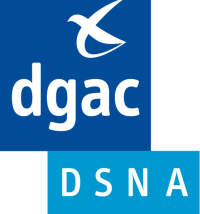Enablers of Network Collaborative Management for En Route and Airports at DSNA
Timeline


Description
Overview
In the recent years DSNA, facing a high traffic increase, has put a lot of emphasis on the development of the Collaborative Network Management concept and on the implementation of supporting tools in order to optimise the use of the capacity through flexible flow management and Collaborative Decision Making in both En route and airport contexts.
In the En route context, SALTO (Swift ATFCM Local Tools Organiser) is an ATFCM (Air Traffic Flow & Capacity Management) local tool developed by DSNA to support FMP (Flow Management Positions) in its ACCs (Area Control Centres). SALTO is intended to offer an enhanced substitute to the present CHMI (Collaborative Human Machine Interface) provided by the NM. It is taking advantage of NM B2B services to deliver to the FMP operators advanced functionalities such as what-if simulations capabilities, enabling them to assess the potential impact of an ATFCM measure. The development of SALTO follows an incremental approach. The initial versions of the system have been deployed since 2016 in the 5 French ACCs. New functionalities will be developed and fielded under the present IP.
In the airport context, ANSPs are a major actor of the AOP (Airport Operations Plan)/NOP (Network Operations Plan) process, as being in charge of air traffic control and traffic flow management at the airports and in their vicinity and between airports at a regional level. In France, DSNA has to accommodate different levels of airports:
In the Paris area, which is hosting major traffic hubs, DSNA has built a strong cooperation framework through the CDM (Collaborarive Decision Making) programme associating Aéroport de Paris (ADP), the airport operator at Orly and CDG, and the airlines. The BigSky system, under development by DSNA, aims to provide to Tower and Approach supervisors assistance tools for collaborative management of traffic flows. Under this IP, the development of BigSky will be completed and the system put into service.
At regional airports, DSNA is defining with stakeholders a CDM concept tailored to their needs and will further develop automated assistance tools.
Finally, through Collaborative Network Management, DSNA is striving to re-conciliate En-Route and airports constraints. DSNA is integrating on the same platform tools and processes in a consistent and seamless concept, merging airport and En-Route oriented services to deliver integrated information to the airlines and airports. This is the scope of the DSNA Collaborative Operational Portal which is already providing a first set of services for many airlines and at several airports and will be enhanced under the present IP.
The project will be managed in coherency and will coordinate its implementation scope with AF4 Network Manager CEF projects (i.e. 2015_105_AF4, 2015_110_AF4, 2015_114_AF4, 2015_115_AF4 (all funded under Action 2015-EU-TM-0196-M) and 2017_054_AF4) and with projects undertaken by ADP to address AOP and AOP/NOP needs (2015_135_AF2, 2015_113_AF4 (both funded under Action 2015-EU-TM-0196-M, 2017_022_AF2).
Specific objectives:
In the En Route environment, this IP specifically aims to develop advanced functionalities of the SALTO system that will help enhancing the European ATM network performance:
by making it possible for flow managers to better evaluate the workload of the controllers with the help of complexity assessment tools. These tools will greatly help optimising capacity;
by developing functionalities and procedures to ensure an efficient working relationship between NM, FMP and airspace users. Hotspot detection and declaration tools as well as STAM (Short Term ATFCM measures) preparation, coordination and dissemination support tools will be developed to reach that goal;
by disseminating relevant ATFCM information to the Control Working Positions.
In the airports and approach environment, this IP will enhance BigSky with tools and processes enabling ATC operators to participate to AOP/NOP information sharing. Making use of SWIM (System Wide Information Management) concepts, BigSky will interface AOP and NOP systems and deliver to tower and approach operators a set of dedicated decision tools supporting processes such as slot management, runway balancing, and satellite airport traffic flow integration.
Regarding DSNA Collaborative Operational Portal, this IP will enlarge the scope of the hosted information, enrich information by cross-referencing between different sources and offer to external customers a register of suitable API (Application Programming Interface) to enable B2B access in addition to the existing HMI, which provides only an end user oriented access.
Additionally some adaptations to interface the ATM legacy system with the collaborative tools will be necessary.
Expected Results:
The interface of DSNA ATM Systems to NM Systems in DSNA ACCs is enhanced.
Coordination is optimised between local entities (such as ANSP, Airport and AU- airspace user) and NM tools in Paris area.
Shared Target Time for ATFCM purposes for Paris arrivals is implemented.
Basic level of AOP/NOP information sharing provided at several regional airports is implemented.
Coordination of ATFCM measures between all concerned actors is improved.
Operational efficiency is improved by disseminating STAM information on the control working positions.
Situational awareness and decision support for FMPs operators and Tower/Approach supervisors are improved.
Performance Benefits:
STAM will lessen the need for ATFCM regulations, leading to a decrease of ATFCM delays.
More traffic fluidity will improve flight efficiency (ASMA (Arrival Sequencing and Metering Area), Pre-departure delay and Taxi Out time on satellite airports).
Increased CTOT (Calculated Take-off time) adherence on satellite airports.
Capacity enhancement due to optimised use of available capacity.
Better predictability of operations, to the benefit of airspace users and passengers.
Countries involved
Additional Information
- Project Type: Air Navigation Service Provider
- CEF Call Year: 2017
- Civil/Military: Civil
- Multistakeholder: Yes
- Main AF: AF4 - Network Collaborative Management
- Sub AF: S-AF 4.1 - Enhanced STAM
- Progress Percentage: 100%
